Fundamentals of Computer | Computer Science for Class 3 PDF Download
| Table of contents |

|
| Introduction to Computer |

|
| Starting and Shutting down the computer |

|
| Computer Room Etiquettes |

|
| Some of the Important keys |

|
| Advantages and Disadvantages of Computers |

|
Introduction to Computer
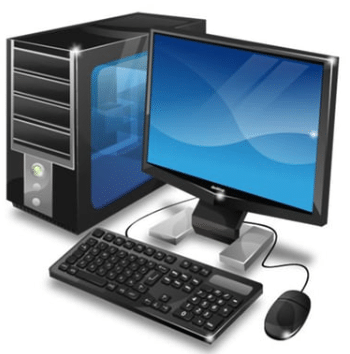
A computer is a device that works with electricity. It takes input from you, processes it using a set of instructions called a program, and gives you the output you need. It can also store your information for later use. The way a computer works is through the "Input-Process-Output" cycle.
Parts of Computer and their functionality
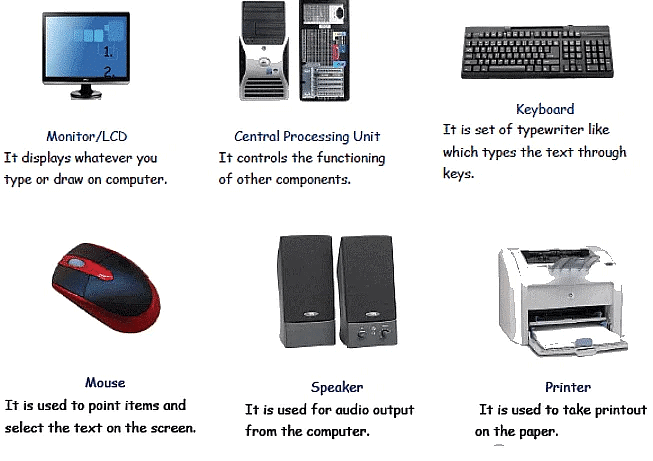
Starting and Shutting down the computer
To start a computer, follow these steps:
- Plug in your computer and all peripherals (devices connected to it).
- Switch on your UPS, which supplies uninterrupted power to your computer.
- Press the power button on your CPU. the computer will then boot up.
To shut down your computer, click on the Start button.
- In the lower right corner of the Start menu, click on the shut down option.
- The computer will prompt you to close all open programmes before shutting down.
Computer Room Etiquettes
1. Remove your shoes before entering the Computer Room because your shoes contain dust which can harmful for any electronic equipment including computer.
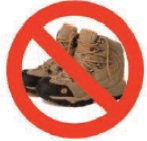
2. Open the door of Computer room slowly and enter it calm and quietly.
3. Never touch the computer parts and attached cables as they can be harmful for both (Computer & you).
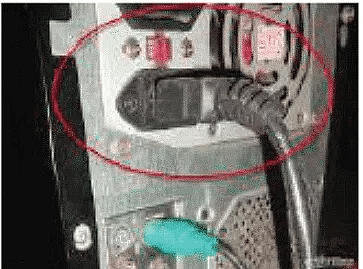 4. Do not push each other while standing near a computer.
4. Do not push each other while standing near a computer.
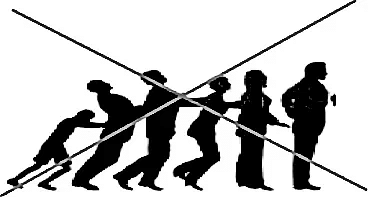
5. Sit down calm and quietly while seeing Demo on the computer. Ask questions whenever you are given chance for it.
6. Never carry magnets inside the computer room.
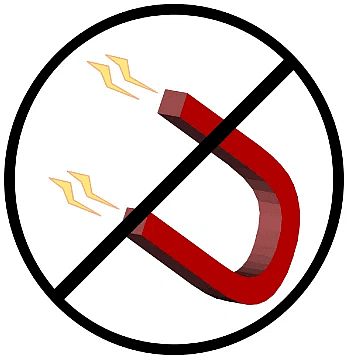 7. Keyboard of your computer should be handled gently.
7. Keyboard of your computer should be handled gently.
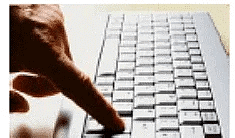
8. Please do not eat anything such as chewing gum, bubble gum and other sticking things inside the computer room.
9. Never keep any things such as books, notebooks, pencil boxes on the monitor, keyboard or CPU.
10. Always use soft and dry clothes to clear the various parts of a computer.
11. Always Shut down your computer properly and cover it with clean clothes before leaving the computer room.
Identify the keys on keyboard- different keys on keyboard
Keyboard looks like a typewriter. It is made up of different types of Keys. These keys are small buttons on the keyboard. Alphabets in Capital letters, numbers, some special characters, are printed on the keys whenever we press the keys whatever is written on the keys will printed on the screen.
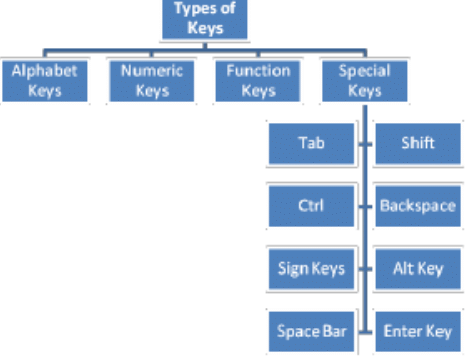
Some of the Important keys
- Alphabetical Keys: A,B,C………………………………Z are alphabets keys. There are 26 alphabet keys on the keyboard. Whenever we press these keys associated alphabet in small case is written in the screen.
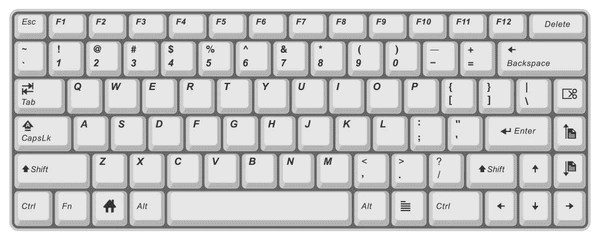
- Numerical Keys: 0,1,2,…………………………9 are numeric keys. There are 10 numeric keys on the keyboard.

Special Keys
- Caps Lock: This key is used whenever we want to type the entire sentence, whole word and letter in a capitals. To use this key press it once and see the yellow light on the right corner of keyboard where the Caps Lock is written on a button. If the light is on it means the Caps Lock is active. If we want to write in small case then press this button again the Caps Lock is off now.

- Enter Key: This key is used to finish a line and move to a next new line on the page. Enter key is pressed after typing every command. There are two Enter key on the keyboard.
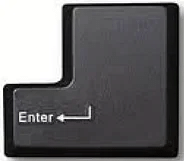
- Shift Key: Shift key is present on both sides of the keyboard. The Shift key is modifier key on a keyboard .The shift key is a modifier key on a keyboard, used to type capital letters and other alternate "upper" characters. There are typically two shift keys, on the left and right sides of the row below the home row.
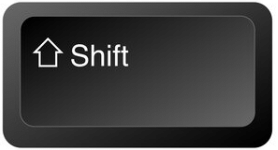
- Space Bar: This key is used to insert the space between two word. It is the longest key on the keyboard.

- Backspace: is used to delete any character before the current position of the cursor.

- Arrow Keys: is used to move the cursor position in all directions (left, right, up and down) in the page.

Buttons of a Mouse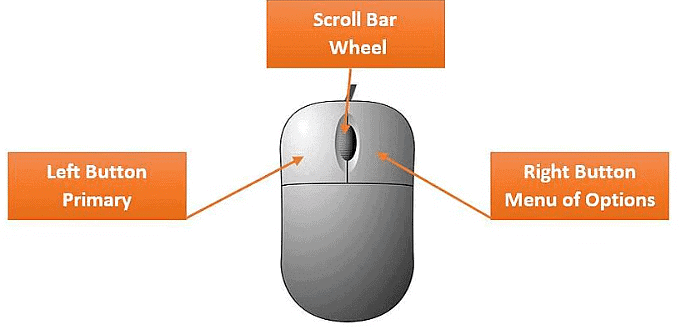
- Left Mouse Button: Used for pointing, selecting, and clicking on items such as menus, tools, icons, text, and images.
- Mouse Wheel: Used for scrolling the page up and down.
- Right Mouse Button: Used for opening shortcut menus.
Do’s and Don’ts of Computer Lab
- Remove your shoes before entering the Computer Lab.
- Wash and dry your hands before touching computer parts.
- No food or drink is allowed in the Computer Lab.
- Work quietly in the Computer Lab.
- Do not change any computer settings.
- Do not install or download any software or modify or delete any system files on any lab computers.
- Searching on the internet must be for academic purposes. Only visit approved websites.
- Operate the computer equipment properly.
- Maintain proper posture while using computers.
Advantages and Disadvantages of Computers
Advantages
- Speed: Computers can process information and perform tasks much faster than humans.
- Accuracy: They carry out calculations and data processing with a high level of precision, minimizing errors.
- Data Storage: Computers have the capacity to store vast amounts of data, making it easily accessible for future use.
- Reliability: They are consistent and dependable, performing tasks without fatigue or variation in quality.
- Versatility: Computers can perform a wide range of tasks using the same data, adapting to different applications and functions.
Limitations
- Lack of Intelligence: Computers do not possess the ability to think or understand information like humans do.
- Dependence on Electricity: They require a constant supply of electricity to operate, limiting their functionality in power outages.
- No Independent Thought: Computers cannot generate ideas or thoughts on their own; they follow programmed instructions.
- Inability to Make Decisions: They lack the capacity to make choices or decisions without human input or predefined criteria.
|
7 videos|12 docs|12 tests
|
FAQs on Fundamentals of Computer - Computer Science for Class 3
| 1. What are the basic components of a computer? |  |
| 2. How does a computer work? |  |
| 3. What is the difference between RAM and storage? |  |
| 4. What is the purpose of an operating system? |  |
| 5. How can I protect my computer from viruses and malware? |  |















